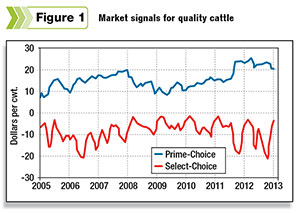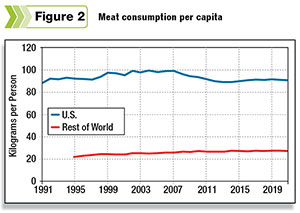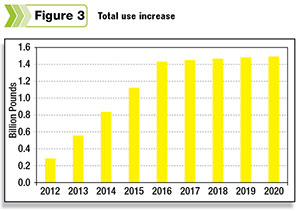You decide. Each time you buy a bull, keep a heifer or cull a cow, you choose a future for your herd and, collectively, for a beef industry that is either blessed or burdened with high prices. “I don’t want record prices because of the lowest beef supplies in 50-some-odd years, said a University of Missouri livestock economist. “I want the highest price because demand is pulling us along.”
Most everybody in the cattle business would want what Scott Brown wants. There were certainly nods of agreement at the March 12 Midwest Section, American Society of Animal Scientists meetings in Des Moines, Iowa.
Brown said history, economic modeling and consumer-preference studies point the way to make that happen, speaking at the Harlan Ritchie Beef Symposium during those meetings.
 Analysts are good at looking into demand caused by price, income levels and available substitutions, “but there are other factors we economists don’t often deal very well with – taste and preferences,” he said.
Analysts are good at looking into demand caused by price, income levels and available substitutions, “but there are other factors we economists don’t often deal very well with – taste and preferences,” he said.
“Those can cause that demand function to shift, either to the left – which is not good news for the industry – or to the right,” Brown said. “Shifting that demand curve to the right is always important for us.”
Marbling level is a clear indicator of probable satisfaction, he noted.
“If we’re at the low end of the marbling side, the probability of a consumer having a good experience is not very high,” Brown said. “The last thing you want to do is spend money on what is perhaps the most expensive meat product, and not have a good experience.”
But is there enough producer incentive to target these higher marbling levels?
“That prime premium relative to choice has been very attractive as of late,” and during a time of sluggish growth in the U.S. gross domestic product (GDP).
Besides more dollars, a real bonus for aiming that high is “a lot less volatility,” Brown said.
“Certain times of the year, we probably have plenty of choice cattle and we’re not paying much more for them relative to selects, and at other times we’re tight on choice supplies,” he said.
To that seasonality, add decisions by large-scale retailers and you have a recipe for variation in the signals.
“If I can target higher-end quality, higher than choice, there are some real rewards in the marketplace,” Brown said, showing a chart. The choice boxed-beef cutout hasn’t made it above $200 per hundredweight (cwt), while prime broke through $240 per cwt last year.
“Frankly, it takes that kind of movement, if we’re going to have an industry that can survive on $7-plus corn,” he said.
 Overall U.S. beef demand hit a bottom in 1997, followed by brief recovery before sliding again since 2004.
Overall U.S. beef demand hit a bottom in 1997, followed by brief recovery before sliding again since 2004.
“Changing that is a huge step in getting back to 100 million or 105 million head of cattle in this country,” Brown said.
From 2004 to 2008, total consumer expenditures on choice beef was fairly constant at $25 billion.
“But in 2010, 2011, 2012, we’ve seen a nice increase,” he said. “At the same time, we have not seen much recovery in select expenditures.”
Prime trends are similar to that of choice.
“We often talk about consumers ‘buying down,’ going to McDonald’s instead of those steakhouses,” Brown said. “When you look at the graphs this way, you don’t get quite that same picture.”
While U.S. demand remains uncertain, globally the picture is a little brighter.
“In 2012, we were actually down in terms of U.S. beef export quantity, but if we instead look at it on a value basis, we’re still growing,” he said.
“That tells me we’re shipping more and more higher-valued products out of the U.S., and that’s likely going to continue.”
 Half of the world’s population will have 6 percent more disposable income in the immediate future. Brown said they’re going to demand higher-quality products.
Half of the world’s population will have 6 percent more disposable income in the immediate future. Brown said they’re going to demand higher-quality products.
Beef’s alternatives are simple: Either it plods along the same path, or it breaks out and follows a path like that of poultry in the 1980s and ’90s, or the recent boom in the corn business.
“You may not like it from a policy standpoint,” he said, “but they generated new demand for their products and guess what? It’s not going to go away any time soon.”
The drought has given the beef industry a clear way to choose its destiny.
“We have a chance to rebuild that cowherd with better genetics,” Brown said. “And I don’t want to undersell that those who jump early are the ones who are going to get the benefits of adopting.” ![]()
—From Certified Angus Beef press release
Figures courtesy of Certified Angus Beef.







